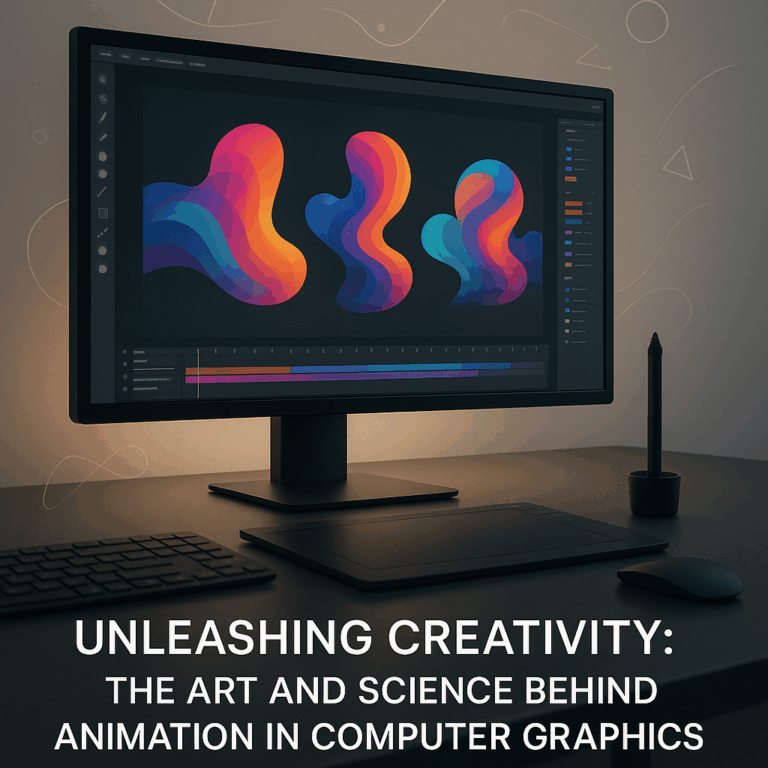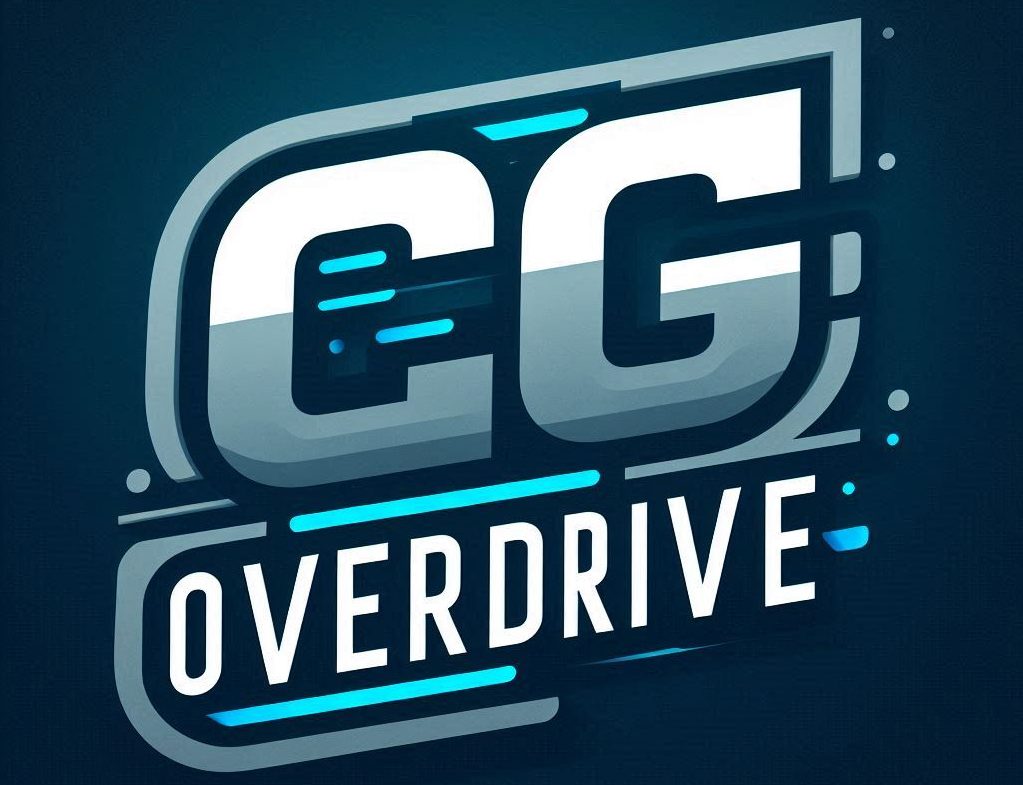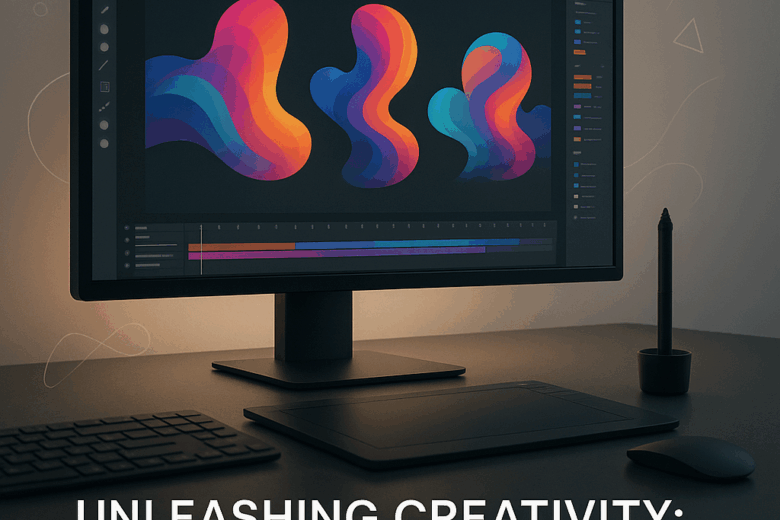The Art and Science of Animation in the Computer Graphics Industry
Animation is a cornerstone of the computer graphics (CG) world, blending artistic vision with cutting-edge technology to create dynamic, immersive experiences. From blockbuster films and video games to architectural visualization and advertising, animation breathes life into static concepts, enabling storytellers and designers to transcend traditional boundaries. As an artistic soul fascinated by the synergy of creativity and technology, I am drawn to animation’s transformative power to craft worlds that captivate, inform, and inspire.
Why Animation Matters in the CG Ecosystem
Animation is more than movement; it’s a language that communicates emotions, ideas, and narratives across diverse mediums. Within the CG industry, animation serves multiple functions:
– **Storytelling**: Conveying complex tales in an accessible, engaging manner.
– **Visualization**: Transforming architectural and design plans into vivid, understandable environments.
– **Advertising**: Creating compelling campaigns that capture attention in saturated markets.
– **Multimedia Integration**: Enhancing interactive experiences through seamless motion design.
Each facet of animation enriches the business of computer graphics by pushing the envelope of what digital artistry can achieve, challenging professionals to innovate continually.
Mastering Animation: Practical Guidance for CG Artists
Whether you’re an aspiring animator or a seasoned professional diversifying into new CG territories, certain principles are vital:
**1. Understand the Fundamentals of Motion**
The essence of animation lies in movement realism—whether stylized or hyperrealistic. Study timing, spacing, and easing:
– *Timing* dictates the speed of motion and influences mood.
– *Spacing* governs the position of frames within time.
– *Easing* modulates motion fluidity, avoiding robotic, linear transitions.
**2. Choose the Right Animation Software**
The CG industry provides a plethora of animation tools tailored for various needs, each with strengths in different domains:
| Software | Best For | Key Features | Popular Usage |

|—————-|—————————-|————————————-|—————————–|
| Autodesk Maya | Character animation | Advanced rigging, dynamic simulations | Film, games |
| Blender | Open-source versatility | Robust modifiers, powerful rendering | Indie projects, multimedia |
| Cinema 4D | Motion graphics | Intuitive interface, MoGraph toolset | Advertising, broadcast |
| Adobe After Effects | 2D animation & compositing | Layer-based animation, effects | Multimedia, advertising |
Select tools based on project requirements, platform compatibility, and your skill set.
**3. Develop a Story-Driven Mindset**
Animation flourishes when guided by narrative intent. Before starting any project:
– Outline story beats or key messages.
– Create mood boards to establish tone.
– Sketch animatics or rough thumbnails that map temporal flow.
Animation in architectural visualization and advertising also benefits from storytelling—imagine walking clients through a building design or presenting a brand journey compellingly.
**4. Embrace Multidisciplinary Collaboration**
Animation rarely exists in isolation. Leverage insights from architecture, multimedia, advertising, and CG business professionals to elevate your work:
– Collaborate with architects to animate light, shadow, and material behavior accurately.
– Work alongside multimedia specialists to integrate animation into interactive experiences.
– Partner with advertising creatives to tailor animations for audience engagement.
Such collaboration enriches both the artistic and commercial value of animation projects.
Insights into Animation Trends Fueling CG Innovation
Keeping pace with evolving trends ensures your animation work remains relevant and fresh. Some emerging directions include:
**Procedural Animation**
Using algorithms to generate motion, procedural animation enhances efficiency and opens creative possibilities, especially in complex architectural renderings or environment simulations.
**Real-Time Rendering and Virtual Production**
Powered by game engines like Unreal Engine, real-time technologies transform animation workflows:
– Immediate visual feedback accelerates iteration.
– Interactive architectural walkthroughs and immersive advertising experiences become feasible.
**AI-Assisted Animation**
Artificial intelligence algorithms facilitate tasks like inbetweening frames, facial expression synthesis, and motion capture cleanup, enabling animators to focus on creative decision-making.
**Cross-Platform Multimedia Solutions**
Animations designed for seamless deployment across AR, VR, mobile, and desktop platforms cater to a connected audience seeking rich, immersive content.
Animation’s Role in the Business of Computer Graphics
Understanding animation’s business implications provides competitive advantage:
– **Market Diversification**: Animation allows CG studios and freelancers to serve multiple industries—entertainment, architecture, advertising, education—buffering against market volatility.
– **Brand Differentiation**: High-quality animated content elevates brand identity and message retention in crowded marketplaces.
– **Client Communication**: In architecture and product design, animation offers clients experiential previews, increasing satisfaction and reducing costly revisions.
– **Revenue Streams**: Beyond client projects, original animated IPs, tutorials, and asset creation create valuable passive income.
Practical Framework: Integrating Animation into a CG Project Workflow
| Stage | Animation Focus | Best Practices |
|———————|———————————|——————————————|
| Conceptualization | Define animation goals | Use storyboards and style guides |
| Design & Modeling | Create assets ready for animation | Optimize geometry for rigging and rendering |
| Rigging & Setup | Build skeletons and controllers | Maintain clean hierarchies and naming |
| Animation | Develop keyframes and cycles | Emphasize natural timing and arcs |
| Simulation & Effects | Add dynamics and particle systems | Balance realism and artistic intent |
| Rendering | Produce high-fidelity visuals | Optimize for platform and client needs |
| Post-Production | Composite and refine sequences | Incorporate sound and color grading |
This roadmap empowers animators to maintain creative integrity while ensuring efficiency and client satisfaction.
Inspiring Creativity: Animation as a Gateway Between Disciplines
Animation’s unique ability to synthesize architectural precision, multimedia richness, and advertising dynamism makes it a linchpin in CG. For creatives seeking to leave a lasting impact:
– Explore architectural visualization’s spatial storytelling potential.
– Integrate multimedia techniques for interactive narratives.
– Leverage animation’s emotive power to connect brands with audiences.
As Pablo Picasso once said, *“Every child is an artist. The problem is how to remain an artist once we grow up.”* Animation invites CG professionals to nurture that inner artist daily, blending technical mastery with boundless imagination.
The future of animation stands at a nexus of creativity, technology, and business savvy. Embrace it to craft compelling visuals that move, inspire, and transform.

